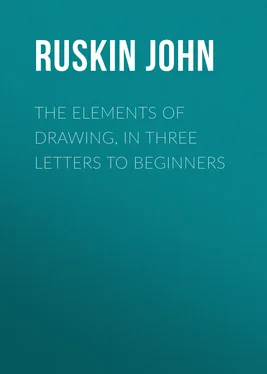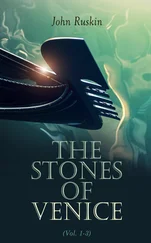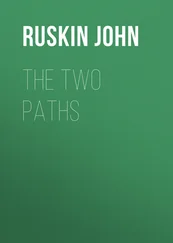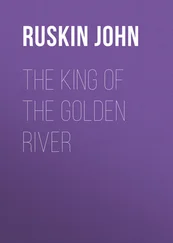John Ruskin - The Elements of Drawing, in Three Letters to Beginners
Здесь есть возможность читать онлайн «John Ruskin - The Elements of Drawing, in Three Letters to Beginners» — ознакомительный отрывок электронной книги совершенно бесплатно, а после прочтения отрывка купить полную версию. В некоторых случаях можно слушать аудио, скачать через торрент в формате fb2 и присутствует краткое содержание. Жанр: foreign_antique, foreign_home, literature_19, visual_arts, на английском языке. Описание произведения, (предисловие) а так же отзывы посетителей доступны на портале библиотеки ЛибКат.
- Название:The Elements of Drawing, in Three Letters to Beginners
- Автор:
- Жанр:
- Год:неизвестен
- ISBN:нет данных
- Рейтинг книги:4 / 5. Голосов: 1
-
Избранное:Добавить в избранное
- Отзывы:
-
Ваша оценка:
- 80
- 1
- 2
- 3
- 4
- 5
The Elements of Drawing, in Three Letters to Beginners: краткое содержание, описание и аннотация
Предлагаем к чтению аннотацию, описание, краткое содержание или предисловие (зависит от того, что написал сам автор книги «The Elements of Drawing, in Three Letters to Beginners»). Если вы не нашли необходимую информацию о книге — напишите в комментариях, мы постараемся отыскать её.
The Elements of Drawing, in Three Letters to Beginners — читать онлайн ознакомительный отрывок
Ниже представлен текст книги, разбитый по страницам. Система сохранения места последней прочитанной страницы, позволяет с удобством читать онлайн бесплатно книгу «The Elements of Drawing, in Three Letters to Beginners», без необходимости каждый раз заново искать на чём Вы остановились. Поставьте закладку, и сможете в любой момент перейти на страницу, на которой закончили чтение.
Интервал:
Закладка:
38. Next, prepare scales with gamboge, cobalt, and vermilion. You will find that you cannot darken these beyond a certain point; 11for yellow and scarlet, so long as they remain yellow and scarlet, cannot approach to black; we cannot have, properly speaking, a dark yellow or dark scarlet. Make your scales of full yellow, blue, and scarlet, half-way down; passing then gradually to white. Afterwards use lake to darken the upper half of the vermilion and gamboge; and Prussian blue to darken the cobalt. You will thus have three more scales, passing from white nearly to black, through yellow and orange, through sky-blue, and through scarlet. By mixing the gamboge and Prussian blue you may make another with green; mixing the cobalt and lake, another with violet; the sepia alone will make a forcible brown one; and so on, until you have as many scales as you like, passing from black to white through different colors. Then, supposing your scales properly gradated and equally divided, the compartment or degree No. 1 of the gray will represent in chiaroscuro the No. 1 of all the other colors; No. 2 of gray the No. 2 of the other colors, and so on.
39. It is only necessary, however, in this matter that you should understand the principle; for it would never be possible for you to gradate your scales so truly as to make them practically accurate and serviceable; and even if you could, unless you had about ten thousand scales, and were able to change them faster than ever juggler changed cards, you could not in a day measure the tints on so much as one side of a frost-bitten apple. But when once you fully understand the principle, and see how all colors contain as it were a certain quantity of darkness, or power of dark relief from white—some more, some less; and how this pitch or power of each may be represented by equivalent values of gray, you will soon be able to arrive shrewdly at an approximation by a glance of the eye, without any measuring scale at all.
40. You must now go on, again with the pen, drawing patterns, and any shapes of shade that you think pretty, as veinings in marble or tortoiseshell, spots in surfaces of shells, etc., as tenderly as you can, in the darknesses that correspond to their colors; and when you find you can do this successfully, it is time to begin rounding.
EXERCISE VIII
41. Go out into your garden, or into the road, and pick up the first round or oval stone you can find, not very white, nor very dark; and the smoother it is the better, only it must not shine . Draw your table near the window, and put the stone, which I will suppose is about the size of a in Fig. 5(it had better not be much larger), on a piece of not very white paper, on the table in front of you. Sit so that the light may come from your left, else the shadow of the pencil point interferes with your sight of your work. You must not let the sun fall on the stone, but only ordinary light: therefore choose a window which the sun does not come in at. If you can shut the shutters of the other windows in the room it will be all the better; but this is not of much consequence.
42. Now if you can draw that stone, you can draw anything; I mean, anything that is drawable. Many things (sea foam, for instance) cannot be drawn at all, only the idea of them more or less suggested; but if you can draw the stone rightly , everything within reach of art is also within yours.
For all drawing depends, primarily, on your power of representing Roundness . If you can once do that, all the rest is easy and straightforward; if you cannot do that, nothing else that you may be able to do will be of any use. For Nature is all made up of roundnesses; not the roundness of perfect globes, but of variously curved surfaces. Boughs are rounded, leaves are rounded, stones are rounded, clouds are rounded, cheeks are rounded, and curls are rounded: there is no more flatness in the natural world than there is vacancy. The world itself is round, and so is all that is in it, more or less, except human work, which is often very flat indeed.

Fig. 5.
Therefore, set yourself steadily to conquer that round stone, and you have won the battle.
43. Look your stone antagonist boldly in the face. You will see that the side of it next the window is lighter than most of the paper; that the side of it farthest from the window is darker than the paper; and that the light passes into the dark gradually, while a shadow is thrown to the right on the paper itself by the stone: the general appearance of things being more or less as in a , Fig. 5, the spots on the stone excepted, of which more presently.
44. Now, remember always what was stated in the outset, that everything you can see in Nature is seen only so far as it is lighter or darker than the things about it, or of a different color from them. It is either seen as a patch of one color on a ground of another; or as a pale thing relieved from a dark thing, or a dark thing from a pale thing. And if you can put on patches of color or shade of exactly the same size, shape, and gradations as those on the object and its ground, you will produce the appearance of the object and its ground. The best draughtsman—Titian and Paul Veronese themselves—could do no more than this; and you will soon be able to get some power of doing it in an inferior way, if you once understand the exceeding simplicity of what is to be done. Suppose you have a brown book on a white sheet of paper, on a red tablecloth. You have nothing to do but to put on spaces of red, white, and brown, in the same shape, and gradated from dark to light in the same degrees, and your drawing is done. If you will not look at what you see, if you try to put on brighter or duller colors than are there, if you try to put them on with a dash or a blot, or to cover your paper with "vigorous" lines, or to produce anything, in fact, but the plain, unaffected, and finished tranquillity of the thing before you, you need not hope to get on. Nature will show you nothing if you set yourself up for her master. But forget yourself, and try to obey her, and you will find obedience easier and happier than you think.
45. The real difficulties are to get the refinement of the forms and the evenness of the gradations. You may depend upon it, when you are dissatisfied with your work, it is always too coarse or too uneven. It may not be wrong—in all probability is not wrong, in any (so-called) great point. But its edges are not true enough in outline; and its shades are in blotches, or scratches, or full of white holes. Get it more tender and more true, and you will find it is more powerful.
46. Do not, therefore, think your drawing must be weak because you have a finely pointed pen in your hand. Till you can draw with that, you can draw with nothing; when you can draw with that, you can draw with a log of wood charred at the end. True boldness and power are only to be gained by care. Even in fencing and dancing, all ultimate ease depends on early precision in the commencement; much more in singing or drawing.
47. Now I do not want you to copy my sketch in Fig. 5, but to copy the stone before you in the way that my sketch is done. To which end, first measure the extreme length of the stone with compasses, and mark that length on your paper; then, between the points marked, leave something like the form of the stone in light, scrawling the paper all over, round it; b , in Fig. 5, is a beginning of this kind. Rather leave too much room for the high light, than too little; and then more cautiously fill in the shade, shutting the light gradually up, and putting in the dark slowly on the dark side. You need not plague yourself about accuracy of shape, because, till you have practiced a great deal, it is impossible for you to draw the shape of the stone quite truly, and you must gradually gain correctness by means of these various exercises: what you have mainly to do at present is, to get the stone to look solid and round, not much minding what its exact contour is—only draw it as nearly right as you can without vexation; and you will get it more right by thus feeling your way to it in shade, than if you tried to draw the outline at first. For you can see no outline; what you see is only a certain space of gradated shade, with other such spaces about it; and those pieces of shade you are to imitate as nearly as you can, by scrawling the paper over till you get them to the right shape, with the same gradations which they have in Nature. And this is really more likely to be done well, if you have to fight your way through a little confusion in the sketch, than if you have an accurately traced outline. For instance, having sketched the fossil sea-urchin at a , in Fig. 5, whose form, though irregular, required more care in following than that of a common stone, I was going to draw it also under another effect; reflected light bringing its dark side out from the background: but when I had laid on the first few touches I thought it would be better to stop, and let you see how I had begun it, at b . In which beginning it will be observed that nothing is so determined but that I can more or less modify, and add to or diminish the contour as I work on, the lines which suggest the outline being blended with the others if I do not want them; and the having to fill up the vacancies and conquer the irregularities of such a sketch will probably secure a higher completion at last, than if half an hour had been spent in getting a true outline before beginning.
Читать дальшеИнтервал:
Закладка:
Похожие книги на «The Elements of Drawing, in Three Letters to Beginners»
Представляем Вашему вниманию похожие книги на «The Elements of Drawing, in Three Letters to Beginners» списком для выбора. Мы отобрали схожую по названию и смыслу литературу в надежде предоставить читателям больше вариантов отыскать новые, интересные, ещё непрочитанные произведения.
Обсуждение, отзывы о книге «The Elements of Drawing, in Three Letters to Beginners» и просто собственные мнения читателей. Оставьте ваши комментарии, напишите, что Вы думаете о произведении, его смысле или главных героях. Укажите что конкретно понравилось, а что нет, и почему Вы так считаете.












